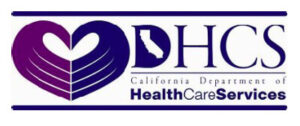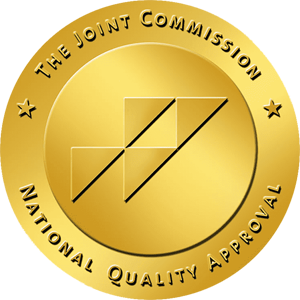Alcohol recovery is a long journey. One major hurdle in this process is Post-Acute Withdrawal Syndrome (PAWS). PAWS in alcohol recovery can feel like a roller coaster. It brings emotional and psychological symptoms that appear after the initial withdrawal phase. Many people relapse because they don’t understand PAWS. Knowing how it works can help you stay on track. This article explains PAWS and how to manage it for long-term recovery.
What is PAWS in Alcohol Recovery?
PAWS stands for Post-Acute Withdrawal Syndrome. It occurs after the acute withdrawal symptoms have faded. These symptoms are more emotional and psychological than physical.
You may feel better physically after the first week. But weeks or months later, mood swings or cravings may return. That’s PAWS. It can last for months, even up to two years in some cases.
The brain takes time to heal from long-term alcohol use. PAWS is a sign that your brain is adjusting. It’s frustrating, but it’s also normal. Understanding this stage is key to staying sober.
Common Symptoms of PAWS
PAWS symptoms vary from person to person. Here are some of the most common ones:
- Mood swings
- Anxiety or panic
- Depression
- Trouble sleeping
- Low energy or fatigue
- Brain fog or trouble thinking clearly
- Cravings for alcohol
- Irritability or anger
- Trouble managing stress
These symptoms come and go. One day may feel good, and the next may feel unbearable. This unpredictability can be discouraging. But knowing it’s part of the process helps you prepare.
Why PAWS Happens?
Alcohol changes the brain’s chemistry over time. It affects dopamine, serotonin, and other neurotransmitters. These chemicals control mood, motivation, and sleep. When you stop drinking, the brain doesn’t return to normal right away. It needs time to balance itself. During this adjustment, symptoms like depression or anxiety can occur. That’s PAWS.
How Long Does PAWS Last?
There’s no fixed timeline. For some people, PAWS lasts a few weeks. For others, it can take a year or more. The duration depends on:
- How long you drank
- How much you drank
- Genetics and overall health
- Co-occurring mental health conditions
Most people see improvement over time. PAWS symptoms come in waves but get weaker and less frequent. Staying consistent with recovery tools helps ease the process.
How to Stay on Track During PAWS?
Staying sober during PAWS is tough, but not impossible. You need a solid plan and strong support. Here are strategies to help:
- Know the Signs: Awareness is your first defense. Learn the symptoms of PAWS so you can recognize them early. Understanding what’s happening reduces fear. It reminds you that it’s temporary. Keep a journal of your mood and thoughts. This helps you track patterns and progress.
- Build a Support Network: You don’t have to do this alone. Lean on friends, family, and recovery groups. Talking helps reduce the power of negative thoughts. Support groups like AA or SMART Recovery can be vital. Online forums are also helpful when in-person meetings aren’t available. Having people who understand PAWS in alcohol recovery makes a huge difference.
- Stick to a Routine: Structure creates stability. Set a daily schedule and follow it. Go to bed and wake up at the same time. Eat meals at regular times. Add small tasks to your day. A structured day reduces stress and gives your mind something to focus on.
- Practice Mindfulness: Mindfulness helps you stay present. It reduces anxiety and helps you manage stress. Simple techniques like breathing exercises or guided meditation can help. Apps like Headspace or Calm offer easy ways to get started. Try five minutes a day and increase over time.
- Exercise Regularly: Physical activity helps the brain heal. It boosts endorphins, improves sleep, and reduces anxiety. You don’t need intense workouts. A daily walk or light yoga can help. Exercise also creates a routine and boosts confidence.
- Eat Healthy Foods: Nutrition affects mood and brain health. Avoid sugar and processed foods. Eat whole foods like fruits, vegetables, lean proteins, and whole grains. Stay hydrated. Drink plenty of water throughout the day. Proper nutrition helps your body recover and your mind stay clear.
- Avoid Triggers: Triggers are people, places, or things that make you want to drink. Learn what yours are and create a plan to deal with them. If you feel overwhelmed, leave the situation. Have a backup plan, like calling a friend or going for a walk. Set boundaries and protect your recovery at all costs.
- Talk to a Therapist: Therapy can help manage emotional symptoms of PAWS. A therapist gives you tools to cope with anxiety, depression, and cravings. Cognitive-behavioral therapy (CBT) is especially helpful. It teaches you to challenge negative thoughts and replace them with healthier ones.
- Use Medication if Needed: Some people benefit from medications during PAWS. These may include anti-anxiety or antidepressant medications. Others use medications like naltrexone or acamprosate to reduce cravings. Always talk to a doctor before starting any medication. It should be part of a larger recovery plan.
- Celebrate Progress: Recovery takes time. Celebrate small victories. Each sober day is a win. Reflect on how far you’ve come. You may feel stuck, but you’re growing. Keep going. It gets better.
Keep Going, No Matter What
PAWS in alcohol recovery is hard. It tests your patience and strength. But it also shows your courage. You’re healing, even when it doesn’t feel like it. Symptoms will fade. Life will become more stable. Keep using your tools and asking for support. You don’t have to be perfect. You just have to keep going.
Recovery is possible. Thousands have done it before you. You can too.






